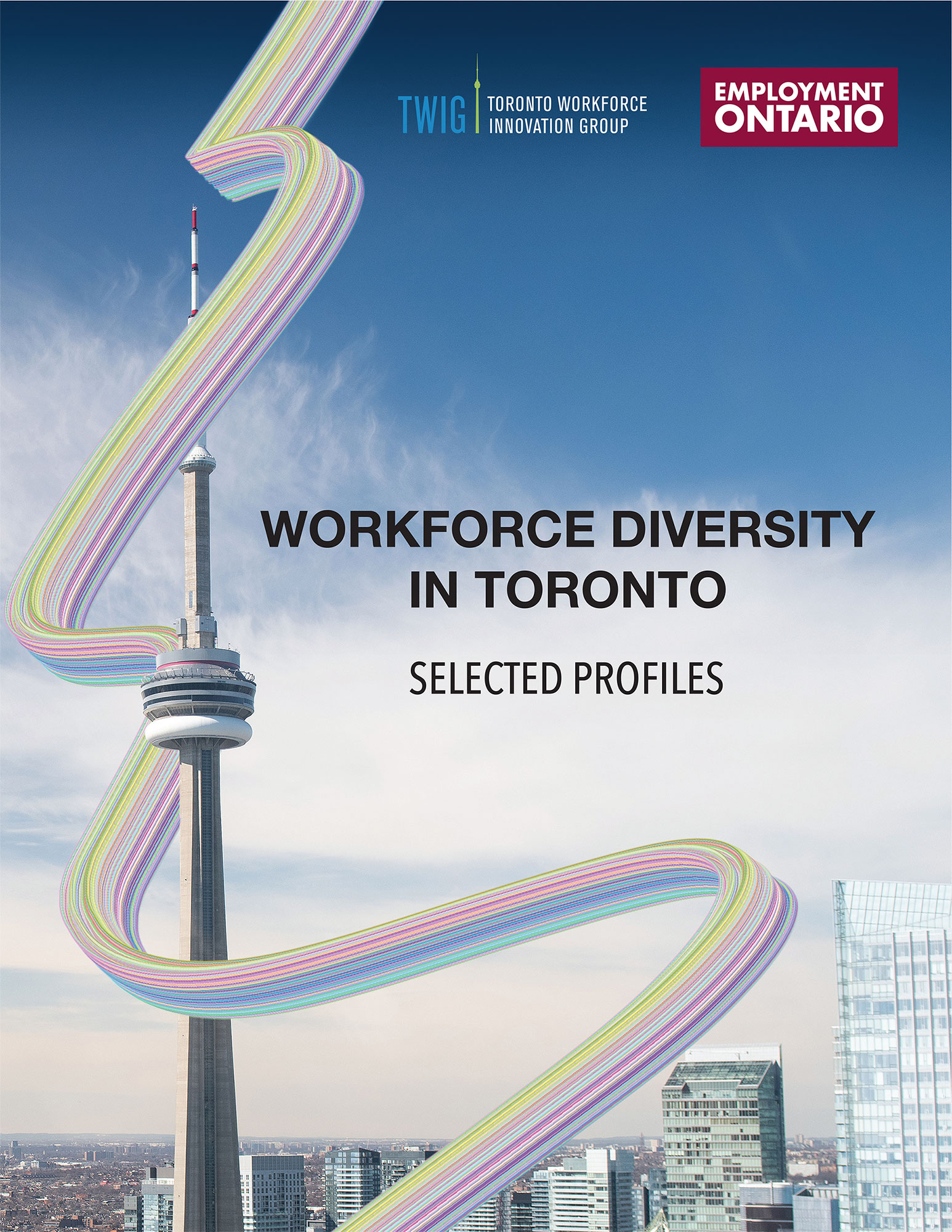Workforce Diversity Profiles
Workers with Disability

The Accessible Canada Act defines a disability as any physical, mental, intellectual, cognitive, learning, communication, or sensory impairment — or functional limitation — whether permanent, temporary, episodic, visible, or hidden, that, when interacting with a barrier, hinders full and equal participation in society. People experience disabilities uniquely and face diverse barriers, even among those with
similar disabilities.
Employment rates remain low; 62% of working-age Canadian adults with disabilities were employed, compared to 78% of those without disabilities. In 2022, the employment rate for persons with disabilities aged 25 to 64 was up 3 percentage points from 2017, narrowing the gap by 5 percentage points.

Gender
In Toronto, women in the workforce were more likely than men to have a disability. Additionally, as noted in the Census, women were more likely than men to have a more severe disability.
Income
The average income for Persons with a disability is $15,000 less than for the population as whole. 49% of all Persons with a disability on average make less than $40,000 per year. This share is 3.3% higher than for the overall workforce showing the average is being dragged down with more people at the lower end and fewer at the higher end.
Newcomers
The percentage of newcomers with a disability make up a fairly small percentage of the overall workforce. This is a direct result of immigration policies which include a health evaluation.
Job by Occupation
Persons with a disability were less likely to have occupations in the trades, healthcare, business and finance, and natural and applied sciences than their peers. Conversely, a higher percentage of persons with a disability work in arts and culture and education, law and social community.
Final Thoughts
In Toronto, Ontario, and across Canada, employers are in a fierce competition to secure the best talent. One way that businesses can do this is by prioritizing accessibility and inclusion in their hiring practices.
Inclusive businesses that hire people with disabilities grow profits up to three times faster than their competitors. According to the Ontario Disability Employment Network (ODEN), businesses also experience a 72% increase in productivity.